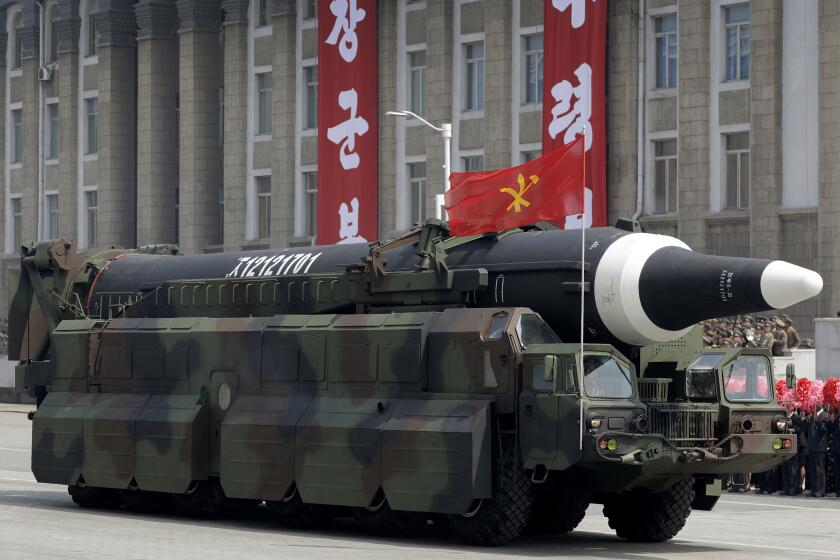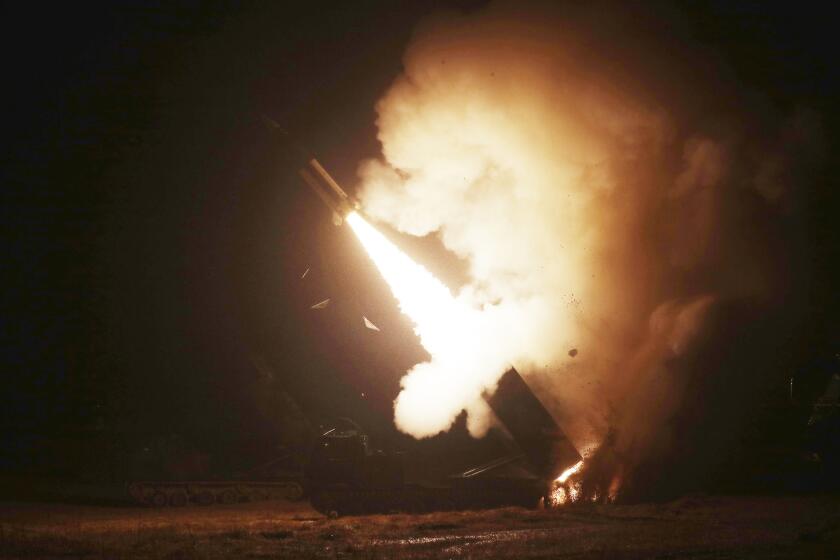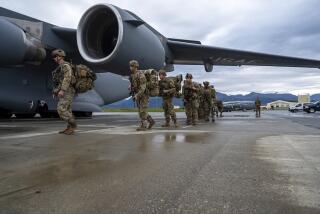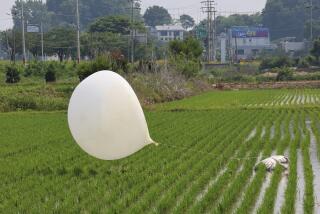North Korea continues missile launches as U.S. redeploys carrier
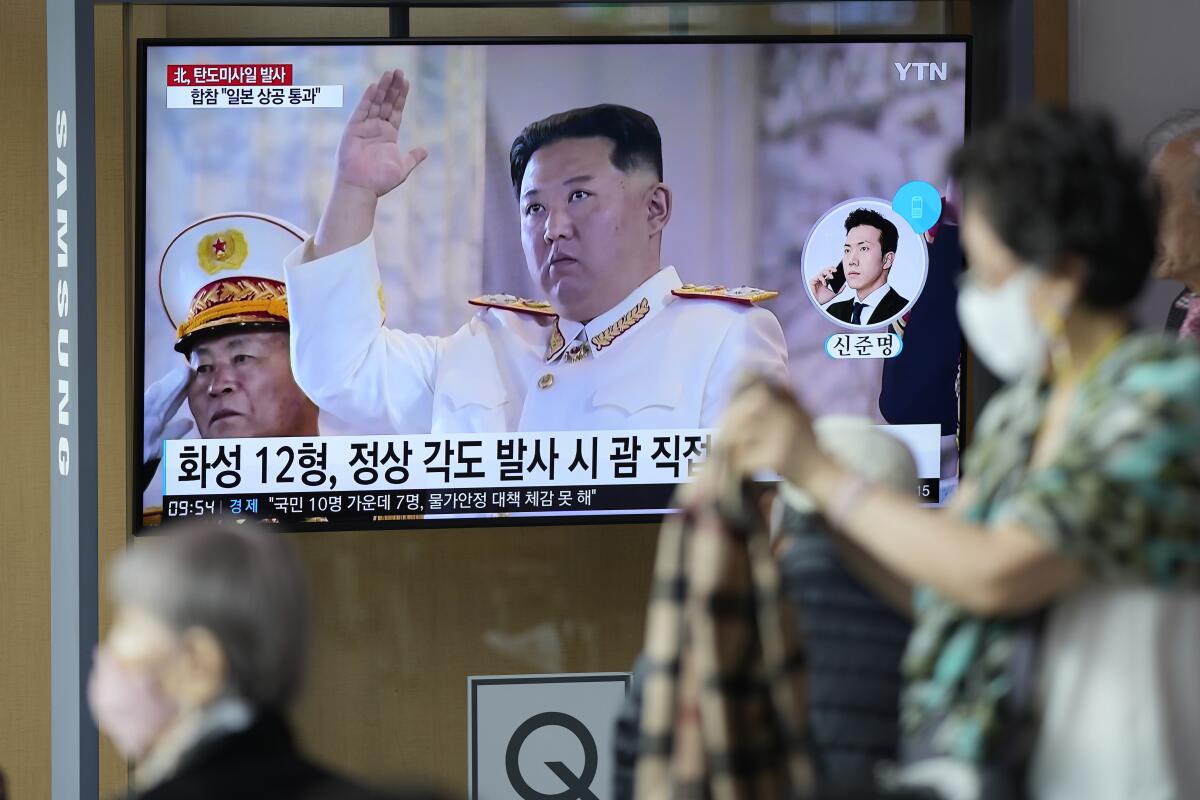
SEOUL — North Korea launched two ballistic missiles toward its eastern waters Thursday, as the United States redeployed one of its aircraft carriers near the Korean peninsula in response to Pyongyang’s previous launch of a powerful nuclear-capable missile over Japan.
South Korea’s Joint Chiefs of Staff said in a statement that the launches were made 22 minutes apart from the North’s capital region. It said South Korea has boosted its surveillance posture and maintains a readiness in close coordination with the United States.
Japanese Prime Minister Fumio Kishida also confirmed the North Korean missile launches, saying the missile firings are “absolutely intolerable.”
The latest missile launches suggest North Korean leader Kim Jong Un is determined to continue with weapons tests aimed at boosting his nuclear arsenal in defiance of international sanctions. Many experts say Kim’s goal is to eventually win U.S. recognition as a legitimate nuclear state and the lifting of those sanctions, though the international community has shown no sign of allowing that to happen.
The launches were North Korea’s sixth round of weapons tests in less than two weeks, which has prompted condemnation from the United States and other countries.
Japanese Defense Minister Yasukazu Hamada said the two missiles launched Thursday morning flew 217 to 500 miles at a maximum altitude of 30 to 60 miles before landing in waters outside his nation’s exclusive economic zone.
Trade used to take precedence in Asia, but geopolitical tensions are now pushing nations into security blocs led by China and the United States.
He said initial analysis suggested the second missile was possibly launched on an “irregular” trajectory. It is a term that has been previously used to describe the flight characteristics of a North Korean weapon modeled after Russia’s Iskander missile, which travels at low altitudes and is designed to be maneuverable in flight to improve its chances of evading missile defenses.
On Tuesday, North Korea staged its most provocative weapons demonstration in years, firing an intermediate-range missile over Japan for the first time in five years. The launch led the Japanese government to issue evacuation alerts and halt trains.
Experts said the projectile was probably a Hwasong-12 missile capable of reaching the U.S. territory of Guam and beyond.
Earlier tests reportedly included Iskander-like missiles and other ballistic weapons designed to strike key targets in South Korea, including U.S. military bases there.
Thursday’s launches came as the U.S. aircraft carrier Ronald Reagan returned to waters east of South Korea in what Seoul called an attempt to demonstrate the allies’ “firm will” to counter the North’s continued provocations and threats.
The carrier was in the area last week as part of joint drills by South Korea and the United States and the allies’ other training involving Japan. North Korea considers such U.S.-led drills near the peninsula as an invasion rehearsal and views training involving a U.S. carrier more provocative.
North Korea’s Foreign Ministry said in a statement Thursday that the redeployment of the Reagan strike group poses “a serious threat to the stability of the situation on the Korean peninsula and in its vicinity.”
After the North’s intermediate-range missile launch, the United States and South Korea also carried out their own live-fire drills that have so far involved land-to-land ballistic missiles and precision-guided bombs dropped from fighter jets.
A South Korean ballistic missile malfunctioned and fell on land during a drill with the U.S., sparking panic among residents in the city of Gangneung.
But one of the tit-for-tat launches nearly caused catastrophe early Wednesday when a malfunctioning South Korean Hyumoo-2 missile flipped shortly after liftoff and crashed into an air force base in the eastern coastal city of Gangneung. South Korea’s military said no one was hurt from the crash and civilian facilities weren’t affected.
After the North Korean launch on Tuesday, the United States, Britain, France, Albania, Norway and Ireland called for an emergency meeting of the United Nations Security Council. The North Korean Foreign Ministry statement Thursday said it strongly condemned U.S.-led efforts at the Security Council to tighten sanctions on Pyongyang over its recent missile testing, which it described as a “just counteraction” to joint U.S.-South Korean drills.
North Korea has carried out a record number of missile tests this year amid long-stalled diplomacy with the United States. The U.S.-led efforts aimed at convincing North Korea to give up its nuclear program in return for economic and political benefits collapsed in 2019 due to disputes over sanctions.
More to Read
Sign up for Essential California
The most important California stories and recommendations in your inbox every morning.
You may occasionally receive promotional content from the Los Angeles Times.
